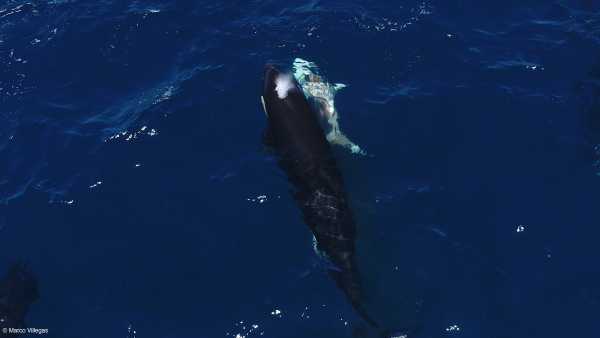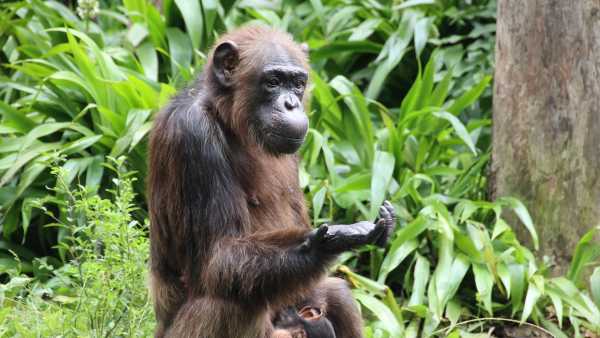
Today we will delve into the world of tits – those seemingly cute yellow-breasted birds that we so often see near our homes, especially in winter. Their playfulness and bright plumage often evoke pleasant emotions in us. But are they really as innocent as they seem?
We will understand how these small creatures combine “grace” and amazing adaptability, including behavior that can shock. After all, nature is not a fairy tale with good and evil characters, but a complex ecosystem where everyone fights for survival.
The range of great tits is impressive – they live throughout Eurasia, from west to east, with the exception of the subpolar, desert and high-mountain regions. This ability to inhabit a wide variety of landscapes indicates their incredible ecological flexibility. Tits choose to live in forests (especially oak, due to the large number of natural nesting cavities), as well as gardens, parks and urban green areas. It is important to note that they avoid dense, dark forests, preferring light areas and forest edges. Their outstanding adaptability to anthropogenic landscapes is an example of successful coevolution with humans. They not only easily adapt to urban conditions, but also actively use our resources, for example, finding food and nesting sites in our gardens.
Even despite deforestation, which at first glance may seem negative, tits are able to find benefits by populating newly formed forest edges and young plantings. And our tradition of feeding birds in winter is a real lifesaver for them, allowing them to survive in the most difficult period.
Although the appearance of the great tit is familiar to many – it is a small bird about 13 cm long, with a wingspan of up to 27 cm and weighing 14-20 grams, its bright yellow plumage with a characteristic black “tie” on the chest is its calling card. This “tie” is not just a decoration, it is an important indicator. In males, it is wider, more distinct and extends all the way to the feet, while in females it is thinner, less pronounced and often does not reach as far, and their plumage is generally a little duller. This nuance is one of the easiest ways to visually distinguish a male from a female.
The singing of a great tit is a real concert! Ornithologists have recorded up to four dozen variations of sounds, and an individual can alternate 3-5 different melodies, differing in rhythm, timbre and pitch. This complex vocal arsenal serves not only to attract a female, but also to mark and protect the territory. Males sing almost all year round, falling silent only for a short period in late autumn and early winter, when energy is directed towards survival.
Titmouses are loyal partners, forming monogamous pairs that often last for several years. This ensures more successful breeding and effective territory protection. Their breeding season is extremely long: from late January to September, but, as ornithologists note, due to global warming we are increasingly seeing it start earlier. This is a concern, because the timing of chicks hatching critically depends on the peak appearance of caterpillars, the main food for young birds. If chicks hatch before caterpillars become available in sufficient quantities, this can lead to their death.
Watching the male's courtship ritual is a real treat: he demonstrates his agility by leaping and gliding with outstretched wings to the nest site, where he ritually feeds the female. This behavior is an indicator of his parental potential.
Titmouses usually lay two clutches of eggs per season. The first clutch, consisting of 5-12 eggs, occurs in April-May. The second clutch, usually slightly smaller—about 3-10 eggs—is laid in June. This double breeding strategy maximizes reproductive success, especially if conditions for the first clutch were unfavorable. The female incubates the eggs for 12-15 days, during which time the male shows extraordinary devotion, obtaining food for both. This intensive feeding requires enormous energy expenditure.
Hatched chicks from the first clutch leave the nest after about 22 days. Interestingly, chicks from the second clutch remain with their parents for much longer, up to 50 days. This may be due to less competition for resources. The maximum lifespan of great tits can reach 15 years, although in the wild most birds live much less due to high mortality among young and predation.
The diet of tits is a true testament to their omnivorous nature and adaptability, which has made them one of the most successful urban birds. During the breeding season, they are extremely efficient invertebrate hunters, consuming vast quantities of aphids, caterpillars, beetles and other garden pests. Their ability to pluck the stingers out of bees before eating them demonstrates impressive intelligence and dexterity. This makes tits a valuable pest control tool for gardeners, and their presence should be encouraged.
With the onset of cold weather, when insects become fewer, tits switch to plant foods – seeds of various plants, nuts. Their willingness to feed on carrion in times of need, although it may seem strange for a “cute” bird, is an important survival strategy that helps them survive harsh winters. This emphasizes their role as “sanitary guards” of nature.
And now for something truly shocking and a testament to nature’s lack of moral values. Great tits are incredibly adaptable and, under certain conditions, ruthless predators. They are capable of hunting small vertebrates, second only to such specialized predators among songbirds as magpies. However, unlike magpies, which string their prey on spines, great tits have developed their own unique strategy.
Their main target is the brain of the victim – an extremely caloric and nutritious tissue, especially valuable in the cold season, when other food sources are exhausted. They are not limited exclusively to the brain, but it is their priority, as it provides maximum energy. Other, smaller birds, rodents, as well as weakened or injured individuals of their own species can act as victims. Titmouses break the skull of the victim with their strong and sharp beak.
They are particularly known for their attacks on pygmy bats, which they lure out of hibernation in caves or crevices, hunting them when they are still weak and disoriented. This is a vivid example of opportunistic predation. This demonstrates the flexibility of tits in finding high-energy food sources, especially in harsh winters or when their usual insects are scarce. And this behavior is a survival strategy, not a manifestation of malice. Understanding these aspects shows how complex and effective the roles of even the smallest inhabitants of our planet are.





